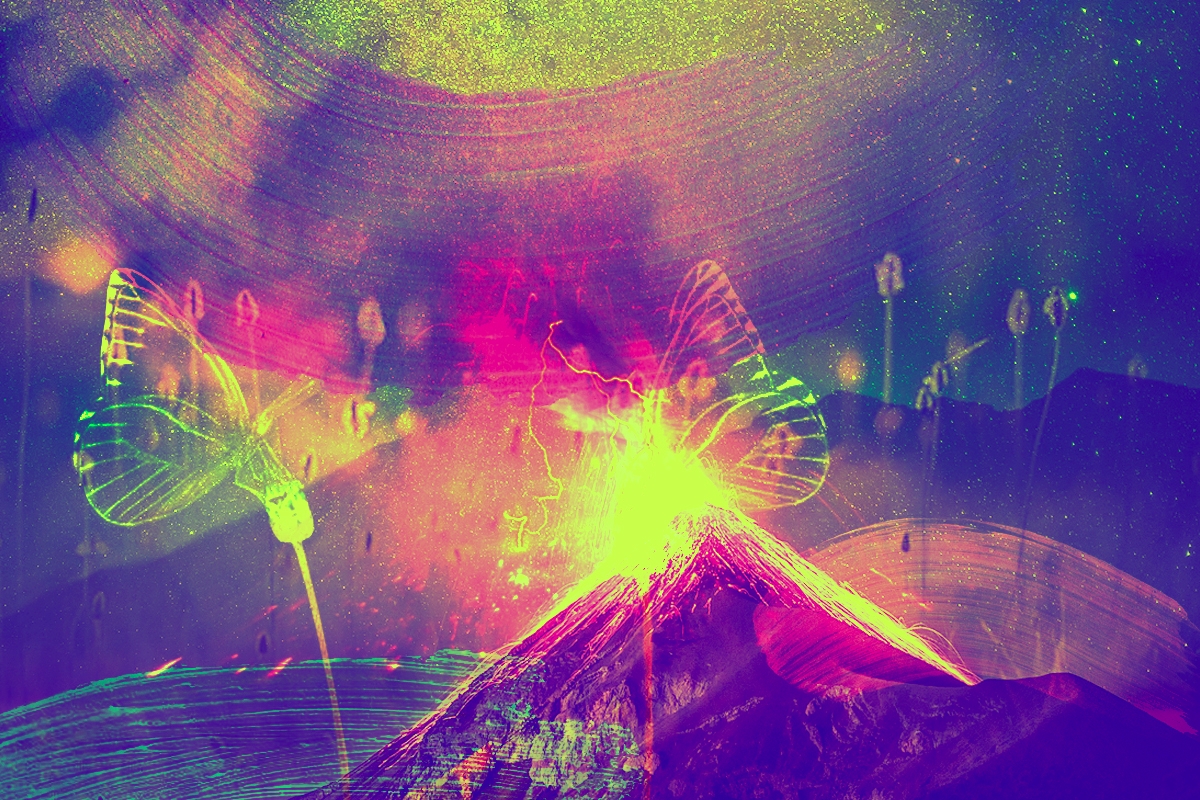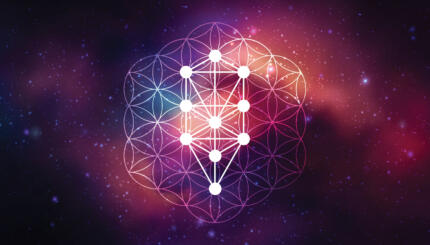The way many of us in the Western world were schooled, creativity was conflated with artistic aptitude. If we weren’t skilled at drawing still lifes, we were left to conclude — or more detrimentally, told explicitly by some well-intentioned adult — that we are not creative.
Yet, the Torah teaches that creativity is our very birthright and foundational to Judaism. The first three words of the Torah are Beresheit bara Elohim — “In the beginning, God created.” God’s first act is one of creativity. Only a few verses later we read that humans are created b’tzelem Elohim (“in the image of God”). If God is, first and foremost, a creator, and we are created in God’s image, then we too are created to be creators. Each of us is endowed with creative capacity simply by being human.
The ancient rabbis knew that activating creativity could be a powerful way to tap into our deepest selves and to access the Divine. After the destruction of the Second Temple, two pathways to divine connection were established — the beit knesset, or house of prayer, and the beit midrash, the house of study. Both came to rely on fixed texts yet, paradoxically, the spiritual and intellectual foundation of the work in both of these centers was fueled by radical creativity.
The Jewish prayer book calls upon us again and again to sing a shir chadash, a new song, to God. What constitutes a new song? Something unique, born of the moment, what is made possible when we open ourselves to the Divine and allow that which is bigger and beyond ourselves to come to us and through us.
With your help, My Jewish Learning can provide endless opportunities for learning, connection and discovery.
The same word — chadash (new) — is also the basis for the sacred work of the beit midrash. As the great sage Rabbi Yehoshua taught: ee efshar l’beit midrash b’lo chiddush (“There is no house of inquiry without creative interpretation.”) Chagigah 3a To be a student of Torah is to bring one’s own creativity into conversation with our ancient texts as a way of eliciting new understandings.
The foundational practices of Judaism — prayer and text study — require an engagement with what is in order to bring about what will be. This is, essentially, what the creative process is: turning what is — an empty page, stage, or canvas — into what becomes our creation. This process is encapsulated in one of the most central names for God in the Torah. In a moment of intimate exchange between God and Moses, in which Moses asks God how he should identify God to the people (Exodus 3:14), God answers: Ehyeh Asher Ehyeh. (“I shall be that which I shall be.”) God self-identifies not as a person or a place, but as a process. God is the force that moves that which is into that which will be.
Creativity as a spiritual practice is a way for us to partner with God and to develop the character traits that allow us to stay in ongoing co-creative partnership. What this relationship requires of us is an openness to the creative process: a willingness to venture into the unknown, the ability to be present in the moment, an openness to our intuition and allowing ourselves to follow where it leads us, and a deep humility in knowing that nothing we bring into the world is ours alone.
At Jewish Studio Project, we work with thousands of adults across the country, helping them to rekindle their creative spark and reconnect to an authentic and meaningful relationship to Judaism and the Divine through creative process as spiritual practice. Below are some tips, from our studio to yours, for embarking on your own spiritual journey into creativity. Whether you are painting, drawing, dancing, singing, playing music, taking photos, or scrapbooking, we hope these will be helpful in getting started:
- Start with where you are: Wherever you are is the perfect place to begin. Regardless of your perceived talent or ability, creativity resides naturally within you, as it does within us all. You do not need any special skills or training to engage in creativity as a spiritual practice, just a willingness to begin and an openness to explore.
- Start with who you are: Get quiet. Go inward. Are you happy? Angry? Agitated? Yearning? What’s live for you? Creativity is a way of being with what is — the good, the hard, and everything in between. It allows us to more deeply know it and, ultimately, to transform it.
- Start with what you have: Creativity as a spiritual practice can happen just as easily — and sometimes more so — with simple materials you already have on hand: ballpoint pen and paper, bare feet on the earth, a pile of sticks and leaves in your front yard, your own voice. No need to go out and buy fancy supplies. Part of the spiritual practice is coming to see the ordinary as extraordinary.
- Get Started: Pick up a material that intrigues you, a color that sparks your interest, and begin. When creating, we often tend to overthink what we’re doing. We want to map out the process and know exactly what the end result will be. Instead, try the reverse. Allow each brushstroke, each note, each move, to lead to the next rather than predetermining a plan. Be with what is and let that be the inspiration for what will be next.
- Free your Mind: Follow what has energy for you in each moment: bringing a particular image into focus, adding blue, the sound of a particular word in the flow of a sentence. Let the intellect relax as you engage your other ways of knowing: intuition and imagination.
- Keep Going: There are many stages to the creative process. Often after an initial round of painting or composing we become attached to what we’ve created and don’t want to wreck it, but we know the piece is not yet done. Find a way to record what you have and then keep going. Often the resistance we feel to letting a piece shift and change is a precursor to creative breakthrough.
Creativity is a way of moving beyond all we think we know and tapping into the place of all possibilities. Each day in the morning liturgy we describe God as mechadesh b’chol yom tamid ma’aseh b’resheit – the one who “renews daily the work of creation.” We human beings are God’s partners in the ongoing work of creation. We need to be creative, and God needs our creativity.
Want more? MJL’s “Discovering Jewish Spirituality” email series will guide you through authentic Jewish methods of bringing spirituality into your everyday experience. Sign up here.
Enhance your spirituality journey by joining our weekly Jewish Meditation Moment for a brief Jewish teaching followed by a guided meditation.



